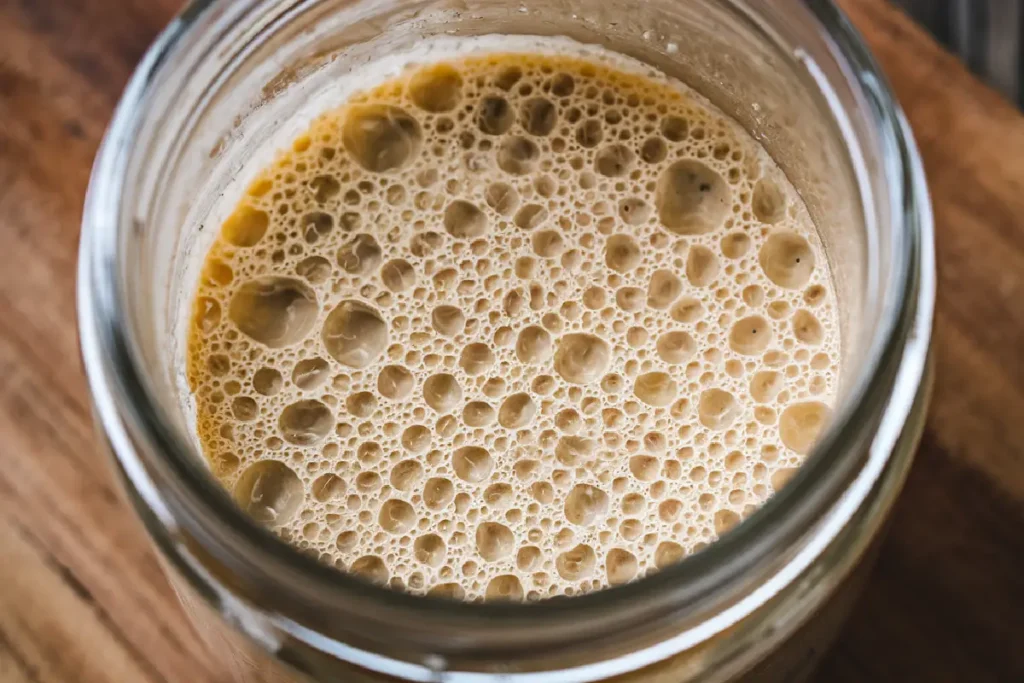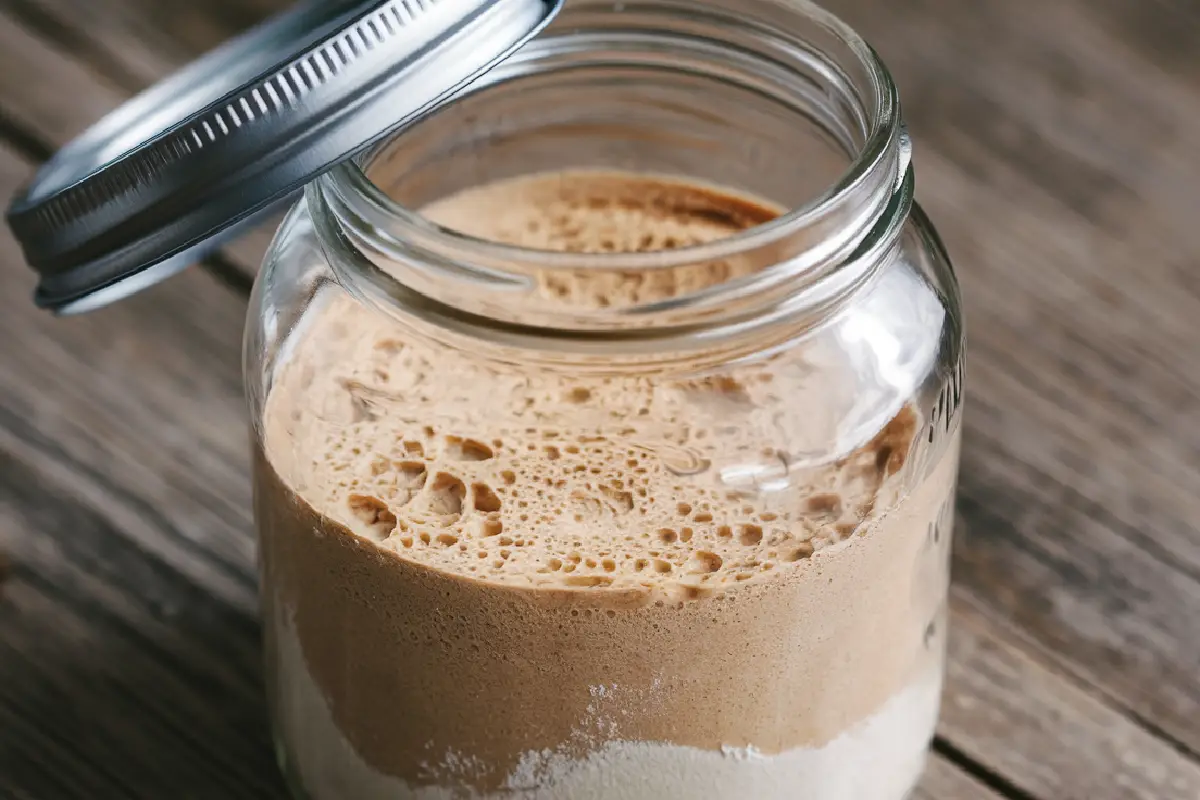Ready to elevate your recipes with the tangy magic of sourdough starter? You’re in the right place! This ultimate guide will walk you through everything you need to know about incorporating sourdough starter into any recipe, from bread to pancakes and even savory dishes. Buckle up, because your culinary adventure is about to get a lot more interesting!
What is Sourdough Starter and How Does It Work?
Before we dive into the nitty-gritty of how to add sourdough starter to any recipe, let’s get acquainted with this culinary powerhouse.
Sourdough starter is a mixture of flour and water that ferments over time, cultivating wild yeast and bacteria. This natural leavening agent creates a unique flavor and texture in baked goods. Unlike commercial yeast, sourdough starter develops a rich, tangy flavor and contributes to the overall texture of the final product.

Why Add Sourdough Starter to Recipes?
You might be wondering why you should consider adding sourdough starter to your recipes. Here are some compelling reasons:
- Flavor Boost: Sourdough starter imparts a deliciously tangy flavor that enhances the taste of your dish.
- Texture Perfection: It adds a delightful chewiness to bread and a fluffy texture to pancakes.
- Nutritional Benefits: Sourdough fermentation breaks down phytic acid, making minerals more available and aiding digestion.
Basic Guidelines for Incorporating Sourdough Starter
Ready to get started? Here’s how to add sourdough starter to any recipe:
- Start Small: Begin by substituting a small portion of your flour with sourdough starter. This will let you gauge how it affects the recipe without overwhelming the other flavors.
- Adjust Liquid Levels: Since sourdough starter is a liquid, you may need to reduce other liquids in the recipe.
- Experiment with Timing: Sourdough starter requires time to develop its flavors. Allow your dough or batter to rise longer than usual.
How Much Sourdough Starter Should You Use?
Determining the right amount of sourdough starter can be tricky. A general rule of thumb is to replace about 1/4 to 1/3 of the flour in your recipe with sourdough starter. For example, if your recipe calls for 2 cups of flour, start with 1/2 to 2/3 cup of sourdough starter and adjust as needed.
Substituting Sourdough Starter for Yeast in Baking
Swapping out yeast for sourdough starter is a great way to add depth of flavor to your baked goods. Here’s a quick guide:
- 1 cup sourdough starter = 1 packet of dry yeast.
- Adjust the Flour: Since sourdough starter is part liquid, reduce the amount of liquid in the recipe accordingly.
For a more detailed look at baking sourdough bread, check out our same day sourdough bread.
Adding Sourdough Starter to Baked Goods
Let’s explore how to add sourdough starter to different types of baked goods:
Bread Recipes
Adding sourdough starter to bread recipes can enhance flavor and texture. Here’s a simple way to do it:
- Bread Dough: Replace 1/3 of the flour with sourdough starter. Adjust the liquid to maintain the right dough consistency.
- Whole Wheat Bread: Sourdough starter complements whole wheat flour by adding a tangy note and improving rise.
Cookies and Muffins
Ever tried sourdough starter in cookies or muffins? It can work wonders!
- Cookies: Add 1/4 cup of sourdough starter to your cookie dough. It will add a subtle tang and make them chewier.
- Muffins: Substitute 1/2 cup of sourdough starter for part of the liquid in your muffin recipe for added flavor and moisture.
Adding Sourdough Starter to Non-Baked Recipes
Don’t limit your sourdough starter use to baking. Here’s how you can incorporate it into other dishes:
Pancakes and Waffles
Sourdough starter gives pancakes and waffles a unique flavor and fluffiness. Simply replace 1/2 cup of the flour with sourdough starter and adjust the liquid as needed.
Dressings and Sauces
For a tangy twist in your dressings and sauces:
- Salad Dressings: Add a spoonful of sourdough starter to your vinaigrette for an extra layer of flavor.
- Creamy Sauces: Stir in some sourdough starter to your creamy sauces for a subtle tanginess.
Soups and Stews
Sourdough starter can also enhance soups and stews:
- Thickening Agent: Use sourdough starter to thicken your soups and stews while adding a rich, tangy flavor.
- Flavor Booster: A dollop of sourdough starter can elevate the complexity of your soups.
Common Mistakes When Using Sourdough Starter
Adding sourdough starter to recipes isn’t without its challenges. Here are some common mistakes and how to avoid them:
- Too Much Starter: Using too much sourdough starter can overpower other flavors. Stick to the recommended amounts and adjust as needed.
- Inadequate Rise Time: Sourdough starter needs time to develop its flavors. Allow your dough or batter to rise longer than usual.
- Ignoring Liquid Adjustments: Since sourdough starter is a liquid, failing to adjust other liquids can affect the consistency of your recipe.
Troubleshooting Sourdough Starter Recipes
If you encounter issues, here’s how to troubleshoot:
- Flat Breads: If your bread isn’t rising, check the freshness of your starter and allow for a longer rise time.
- Overly Tangy Flavor: If the flavor is too strong, reduce the amount of sourdough starter or balance it with sweeter ingredients.
Advanced Techniques for Experienced Bakers
For those looking to delve deeper into sourdough starter techniques:
- Sourdough Starter Variations: Experiment with different types of sourdough starters (e.g., whole grain or rye) to achieve unique flavors.
- Levain Building: Create a levain (a starter for your starter) to enhance the flavor and rise of your baked goods.
Sourdough Starter in Gluten-Free Recipes
Adding sourdough starter to gluten-free recipes can be challenging but rewarding:
- Gluten-Free Flour: Use a gluten-free flour blend to ensure the right texture.
- Adjusting Liquids: Gluten-free flours absorb liquids differently, so you may need to experiment with the amount of sourdough starter used.
Storing and Maintaining Sourdough Starter
Proper care of your sourdough starter is crucial for successful recipes:
- Storage: Keep your starter in the refrigerator if you’re not using it frequently. Feed it once a week to keep it active.
- Feeding: Regularly feed your starter with equal parts flour and water to maintain its strength and flavor.
Recipe Ideas with Sourdough Starter
Ready to try out some recipes? Here are a few ideas to get you started:
- Sourdough Pancakes: Fluffy and tangy pancakes that are perfect for breakfast.
- Sourdough Muffins: Moist muffins with a subtle sourdough flavor.
- Sourdough Bread: Classic bread with a rich, tangy taste and chewy texture.
Nutritional Impact of Sourdough Starter
Incorporating sourdough starter into your recipes can also impact their nutritional value:
- Improved Digestibility: Fermentation breaks down gluten and phytic acid, making nutrients more available.
- Enhanced Flavor Without Extra Calories: Sourdough starter adds depth of flavor without additional calories or sugar.
Conclusion
Adding sourdough starter to any recipe is a fantastic way to boost flavor, texture, and nutrition. By following these tips and experimenting with different recipes, you can unlock a world of culinary possibilities. So, grab your sourdough starter and start cooking!
Feel free to explore more about sourdough and its versatile uses in our other recipes and guides. For instance, you might enjoy our sourdough bread recipe to see how it can be used in traditional baking.
Happy cooking!
